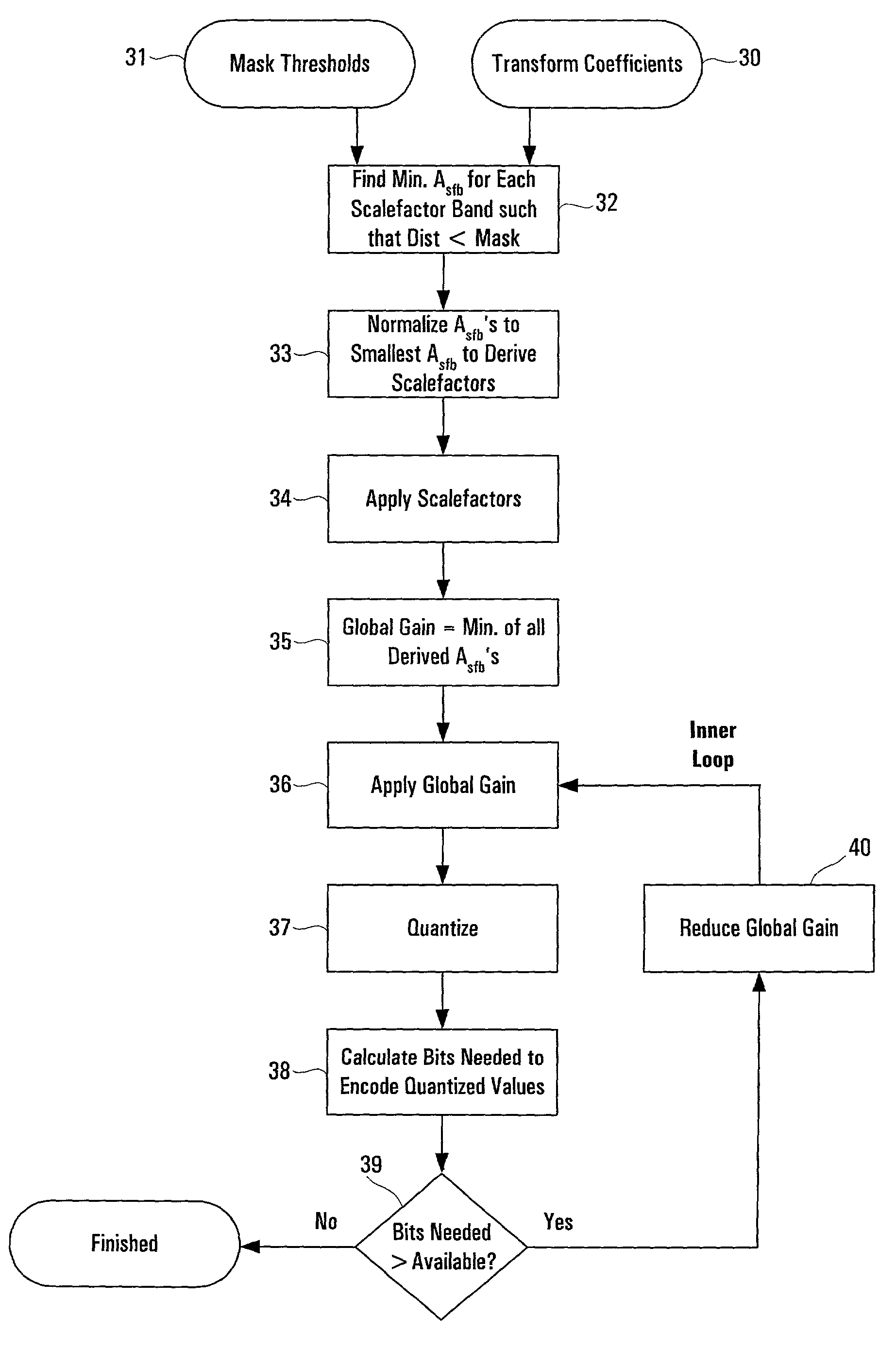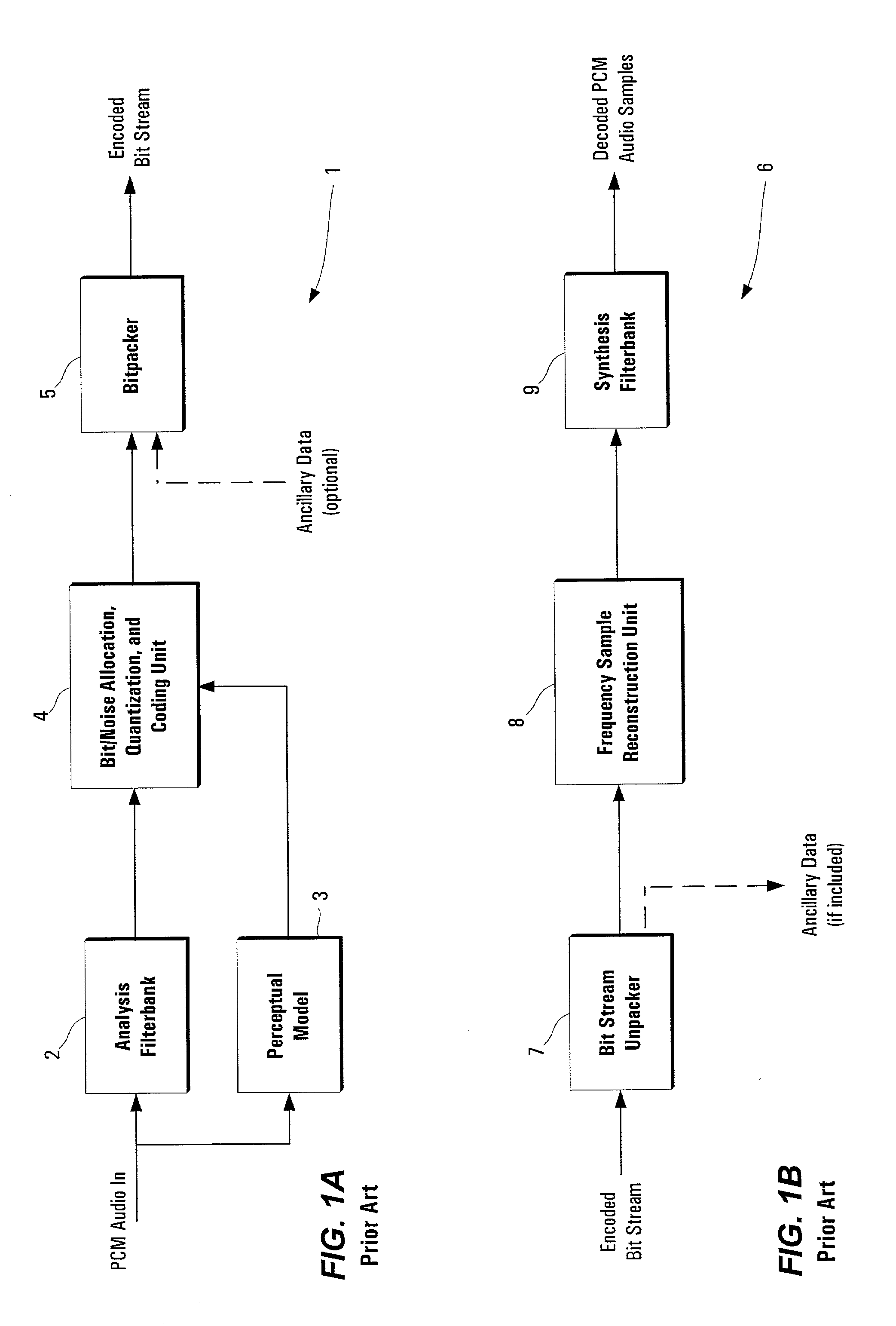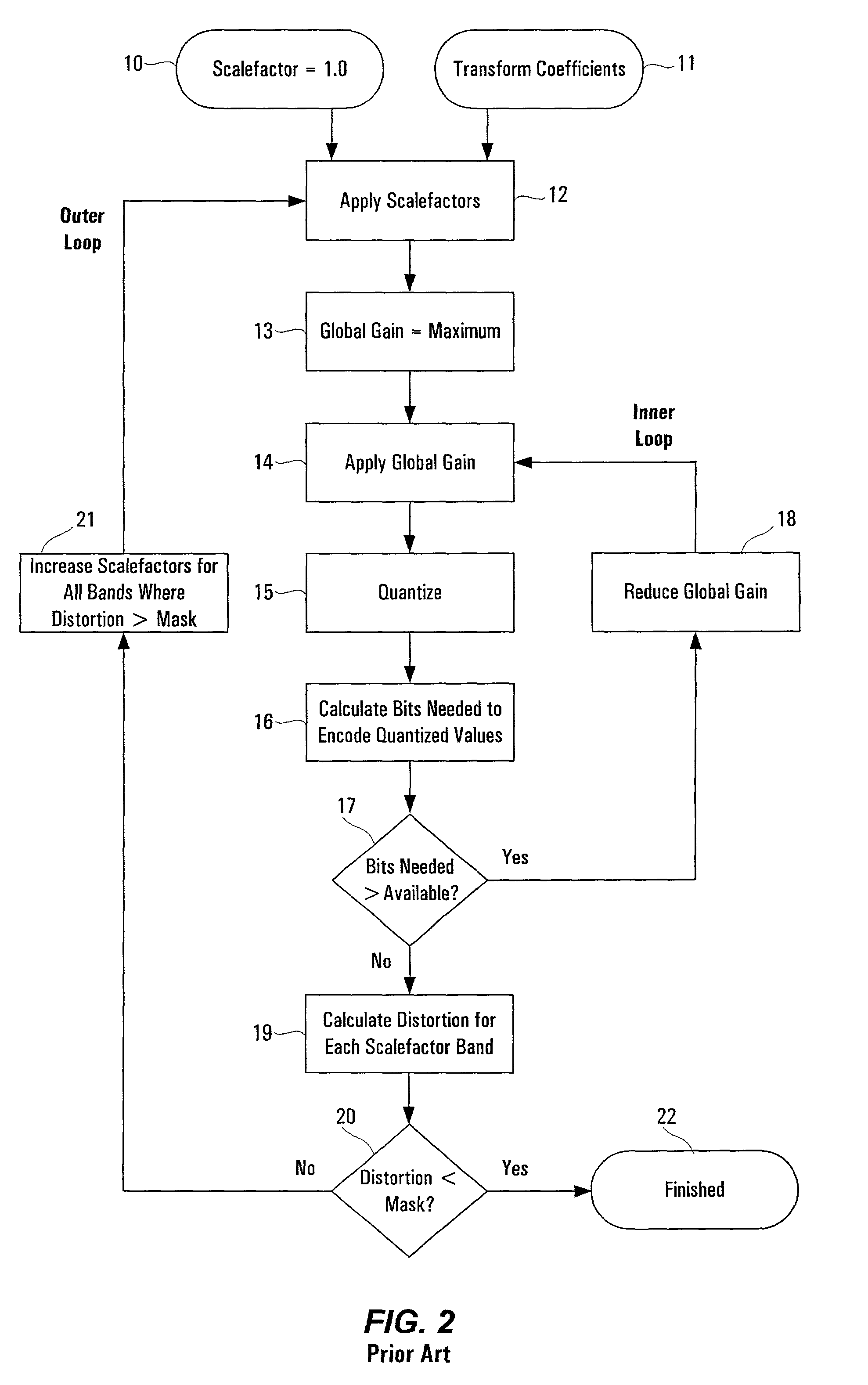Feedforward prediction of scalefactors based on allowable distortion for noise shaping in psychoacoustic-based compression
a scale factor and noise shaping technology, applied in the field of digital processing, can solve the problems of no mpeg-1 compliance requirements, excessive processing power required to carry out computations, and complicated encoders and computationally expensive decoders
- Summary
- Abstract
- Description
- Claims
- Application Information
AI Technical Summary
Benefits of technology
Problems solved by technology
Method used
Image
Examples
Embodiment Construction
)
[0031]The present invention is directed to an improved method of encoding digital signals, particularly audio signals which can be compressed using psychoacoustic methods. The invention utilizes a feedforward scheme which attempts to predict an optimum or favorable scalefactor for each subband in the audio signal. In order to understand the prediction mechanism of the present invention, it is useful to review the quantization process. The following description is provided for an MP3 framework, but the invention is not so limited and those skilled in the art will appreciate that the prediction mechanism may be implemented in other digital encoding techniques which utilize scalefactors for different frequency subbands.
[0032]In general, a transform coefficient x that is to be quantized is initially a value between zero and one (0,1). If A is the total scaling that is applied to x before quantization, the value of A is the sum total scaling applied on the transform coefficient includin...
PUM
 Login to View More
Login to View More Abstract
Description
Claims
Application Information
 Login to View More
Login to View More - R&D
- Intellectual Property
- Life Sciences
- Materials
- Tech Scout
- Unparalleled Data Quality
- Higher Quality Content
- 60% Fewer Hallucinations
Browse by: Latest US Patents, China's latest patents, Technical Efficacy Thesaurus, Application Domain, Technology Topic, Popular Technical Reports.
© 2025 PatSnap. All rights reserved.Legal|Privacy policy|Modern Slavery Act Transparency Statement|Sitemap|About US| Contact US: help@patsnap.com



